חדשות המחקר
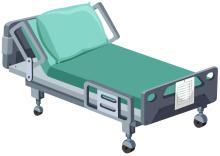
Hila Ben-Amram, Maya Azrad, Jackie Cohen-Assodi, Adi Sharabi-Nov, Shimon Edelstein, Keren Agay-Shay, Avi Peretz: Biofilm Formation by Hospital-Acquired Resistant Bacteria Isolated from Respiratory Samples (J Epidemiol Glob Health .)
Hospital-acquired resistant infections (HARI) are infections, which develop 48 h or more after admission to a healthcare facility. HARI pose a considerably acute challenge, due to limited treatment options. These infections are associated bacterial biofilms, which act as a physical barrier to diverse external stresses, such as desiccation, antimicrobials and biocides. We assessed the influence of multiple factors on biofilm production by HARI -associated bacteria.

Raymond Farah, Rola Khamisy-Farah: Diagnostic Yield of head Computed Tomography in Patients with Syncope: Sex Differences (Isr Med Assoc J . )
Syncope is responsible for approximately 1-3% of all emergency department (ED) visits and up to 6% of all hospital admissions in the United States. Although often of no long-term consequence, syncope can be the first presentation of a range of serious conditions such as strokes, tumors, or subarachnoid hemorrhages. Head computed tomography (CT) scanning is therefore commonly ordered in the ED for patients presenting with syncope to rule out any of these conditions, which may present without other associated physical or neurological findings on initial examination. However, the diagnostic yield of head CTs in patients presenting with syncope is unclear. Objectives: To determine the diagnostic yield of head CT in the ED in patients with syncope.

Ruba Tuma, Marwan Odeh, Maya Wolf, Inshirah Sgayer, Rola Khamisy-Farah: Volume Measurement of the Cavum Septi Pellucidi: Normative Values Between 20 and 40 Weeks of Gestation (Isr Med Assoc J .)
The cavum septi pellucidi (CSP) is a brain-enclosed cavity located on the midline between the two leaflets of the septum pellucidum that separates the lateral ventricles. This structure develops in the fetus from week 18 and can be seen up to week 37 in almost all cases and then begins to disappear. Objectives: To measure and determine the normative values of the CSP volume in fetuses between 20 to 40 weeks of gestation.
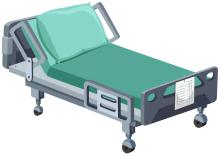
Afik Tibi: To ASLO or Not to ASLO: Utility of the ASLO Test in Dermatology (Isr Med Assoc J .)
Group A Streptococcus (GAS) causes a wide spectrum of acute infections and immune-related diseases, most of which include a dermatological presentation. However, dermatological findings have a wide range of other possible etiologies. The diagnosis of GAS-related disease requires an indication of preceding GAS infection by direct culture or by measuring antistreptolysin O (ASLO) titer. Objectives: To explore the correlation between ASLO positivity and dermatological diseases.
Andrei Braester, Luiza Akria, Moran Zarfati, Masad Barhoum: Patient Blood Management - It Is Impossible To Ignore This Policy (Harefuah . )
Anemia is common and is an independent risk factor for morbidity and mortality, especially in pre- (30-40% of patients undergoing major surgery) or post-operative anemia (up to 80-90%). Using World Health Organization (WHO) criteria, in 2010 one quarter of the global population was anemic (1.9 billion people) and iron deficiency anemia (IDA( was and still remains the most common type of anemia worldwide, accounting for more than half of the total anemia burden. In a systematic analysis for the Global Burden of Disease Study 2016, IDA was the fourth leading cause of years lived with disability, particularly in women, thus highlighting prevention and treatment of IDA as a major public health goal. Red blood cells (RBC) transfusion is a common therapeutic intervention with considerable variation in clinical practice. More than 85 million units packed RBC (PRBC) are transfused annually worldwide. The principal indication for blood transfusion (BT) is anemia, yet a significant percentage of RBC transfusions are inappropriately overused. For many physicians and clinicians, across many different specialties, BT is still considered to be the first-line treatment when facing anemia. The Joint Commission along with the American Medical Association has included BT in a list of the five most overused therapeutic procedures in the United States. Restrictive blood transfusion (RBT) is an evidence-based policy, at least as effective, if not superior to the liberal policy of BT. Patient blood management (PBM) is a patient-centered systematic, evidence-based approach, supported by RBT. In this article we analyze the factors which influence the implementation of PBM.

Nishu Dalal: A novel method for enrichment of Morganella morganii in fecal samples using designed culture medium (Cell Biochem Funct . )
Morganella morganii is a gram negative, facultative anaerobic rod-shaped bacterium, commonly found in environment and in the intestine of human, mammals, and reptiles as a part of their gut microbiome. M. morganii can cause Gram-negative folliculitis, black nail infection, acute retiform purpura, fetal demise, and subdural empyema. The increasing frequency of M. morganii infections generate the need for efficient methods to enrich the presence of M. morganii in clinical samples to make its detection easier.

Rhinoplasty Health Inventory and Nasal Outcomes (RHINO) scale: Translation, Cross-cultural adaptation and Validation for Hebrew-speaking patients (Facial Plast Surg .)
Patient reported outcomes questionnaires are accepted measurement tools to evaluate procedures results. The Rhinoplasty Health Inventory and Nasal Outcomes (RHINO) scale is an English-language validated and reliable quality-of-life instrument that evaluates both functional and aesthetic outcomes after rhinoplasty, and is not available in Hebrew.
(Netanel Eisenbach, Matti Mizrachi, Amiel Dror, Rania Faris, Tali Jane Ohayon, Ohad Ronen, Eyal Sela)

Baruh Polis, Chaim Putterman: Animal models of neuropsychiatric systemic lupus erythematosus: deciphering the complexity and guiding therapeutic development (Autoimmunity .)
Systemic lupus erythematosus (SLE) poses formidable challenges due to its multifaceted etiology while impacting multiple tissues and organs and displaying diverse clinical manifestations. Genetic and environmental factors contribute to SLE complexity, with relatively limited approved therapeutic options. Murine models offer insights into SLE pathogenesis but do not always replicate the nuances of human disease. This review critically evaluates spontaneous and induced animal models, emphasizing their validity and relevance to neuropsychiatric SLE (NPSLE).

Yaara Artsi: Large language models for generating medical examinations: systematic review (BMC Med Educ .)
Writing multiple choice questions (MCQs) for the purpose of medical exams is challenging. It requires extensive medical knowledge, time and effort from medical educators. This systematic review focuses on the application of large language models (LLMs) in generating medical MCQs.
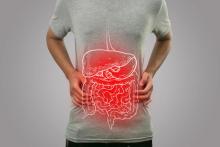
Ibrahim O Sawaid, Abraham O Samson: Proton Pump Inhibitors and Cancer Risk: A Comprehensive Review of Epidemiological and Mechanistic Evidence (J Clin Med .)
Proton pump inhibitors (PPIs) are commonly prescribed long-acting drugs used to treat acid reflux, gastroesophageal reflux disease (GERD), and peptic ulcers. Recently, concerns have been raised about their safety, particularly due to the association between long-term PPI use and cancer development. Multiple comprehensive studies have consistently suggested a noteworthy link between prolonged PPI usage and an increased risk of developing gastric, esophageal, colorectal, and pancreatic cancers, yet the precise underlying mechanism remains elusive.
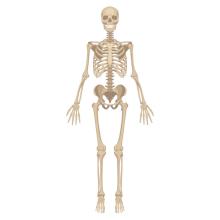
David Karasik: A perspective on muscle phenotyping in musculoskeletal research (Trends Endocrinol Metab .)
Musculoskeletal research should synergistically investigate bone and muscle to inform approaches for maintaining mobility and to avoid bone fractures. The relationship between sarcopenia and osteoporosis, integrated in the term 'osteosarcopenia', is underscored by the close association shown between these two conditions in many studies, whereby one entity emerges as a predictor of the other. In a recent workshop of Working Group (WG) 2 of the EU Cooperation in Science and Technology (COST) Action 'Genomics of MusculoSkeletal traits Translational Network' (GEMSTONE) consortium (CA18139), muscle characterization was highlighted as being important, but currently under-recognized in the musculoskeletal field. Here, we summarize the opinions of the Consortium and research questions around translational and clinical musculoskeletal research, discussing muscle phenotyping in human experimental research and in two animal models: zebrafish and mouse.
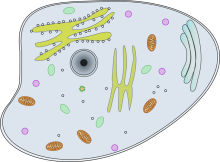
Chaim Putterman: Characterisation of choroid plexus-infiltrating T cells reveals novel therapeutic targets in murine neuropsychiatric lupus (Ann Rheum Dis .)
Diffuse central nervous system manifestations, referred to as neuropsychiatric lupus (NPSLE), are observed in 20-40% of lupus patients and involve complex mechanisms that have not yet been adequately elucidated. In murine NPSLE models, choroid plexus (ChP)-infiltrating T cells have not been fully evaluated as drivers of neuropsychiatric disease.

Khalaf Kridin: Is vitiligo associated with an increased risk of cardiovascular outcomes? Perceptions from a population-based study (Australas J Dermatol .)
While some studies have shown an association of vitiligo with obesity, dyslipidaemia and metabolic syndrome,1, 2 the risk of cardiovascular diseases among patients with vitiligo remains a scope of controversy. This study aimed to investigate the risk of myocardial infarction (MI), cerebrovascular accident (CVA), peripheral vascular disease (PVD) and pulmonary embolism (PE) in patients with vitiligo as compared to control individuals. In addition, we aim to estimate the influence of these cardiovascular conditions on the survival of patients with vitiligo.

Tzipora C Falik Zaccai: A genetic survey of patients with familial idiopathic intracranial hypertension residing in a Middle Eastern village: genetic association study (Eur J Med Res .)
The aim of this study was to determine whether genetic variants are associated with idiopathic intracranial hypertension (IIH) in a unique village where many of the IIH patients have familial ties, a homogenous population and a high prevalence of consanguinity. Several autosomal recessive disorders are common in this village and its population is considered at a high risk for genetic disorders.




